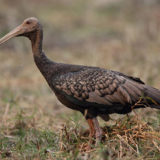GMO : A boon or a curse?
You might have heard about a mythological fire-breathing monster called “Chimera” having head of a lion, body of a goat, tail of a serpent and a pair of large wings. In the same way, scientific researches also result in modifications in some organisms, but, not with their body parts, only the genetic material of these organisms has to be modified. Hence, they are named as Genetically Modified Organisms (GMOs). When a gene from one organism is purposefully moved to improve or change another organism by using modern Biotechnology, it results in a GMO. The living organism thus, possesses a novel combination of genetic material. It is also sometimes called “transgenic” for transfer of genes.
Crop plants, farm animals, and soil bacteria are some of the more prominent examples of organisms that have been subjected to genetic engineering or modifications. By transferring the genes of bacteria, Bacillus thuringiensis, the genetic material of plants like corn and cotton can be modified to make them pest or insect resistant. These modified pest resistant plants are called Bt corn or Bt cotton.
A number of animals have also been genetically engineered to increase yield and decrease susceptibility to disease. Like, salmon fish have been engineered to grow larger and mature faster, and cattle have been enhanced to exhibit resistance to mad cow disease.
The use of genetically modified animals has also been indispensable in medical research. Genetically modified animals have even been used to grow transplant tissues and human transplant organs, a concept called xenotransplantation.
The rich variety of uses for GMOs provides a number of valuable benefits to humans both in agricultural as well as clinical trials.
Other than the beneficial ground, uses of GMOs have also been found to have potential risks. There are unknown consequences to altering the natural state of an organism as well as their response to the external environmental factors through foreign gene expression. The controversy over the use of a genetically modified plant involves the case of Bt corn. The protein from Bacillus thuringiensis, expressed by Bt corn is toxic to insects, but unfortunately, seeds of this plant containing genes for recombinant proteins can cause unintentional spread of recombinant genes and exposure of non-target organisms to new toxic compounds in the environment. So, further research should be done before allowing the farmers to cultivate these Bt crops.











